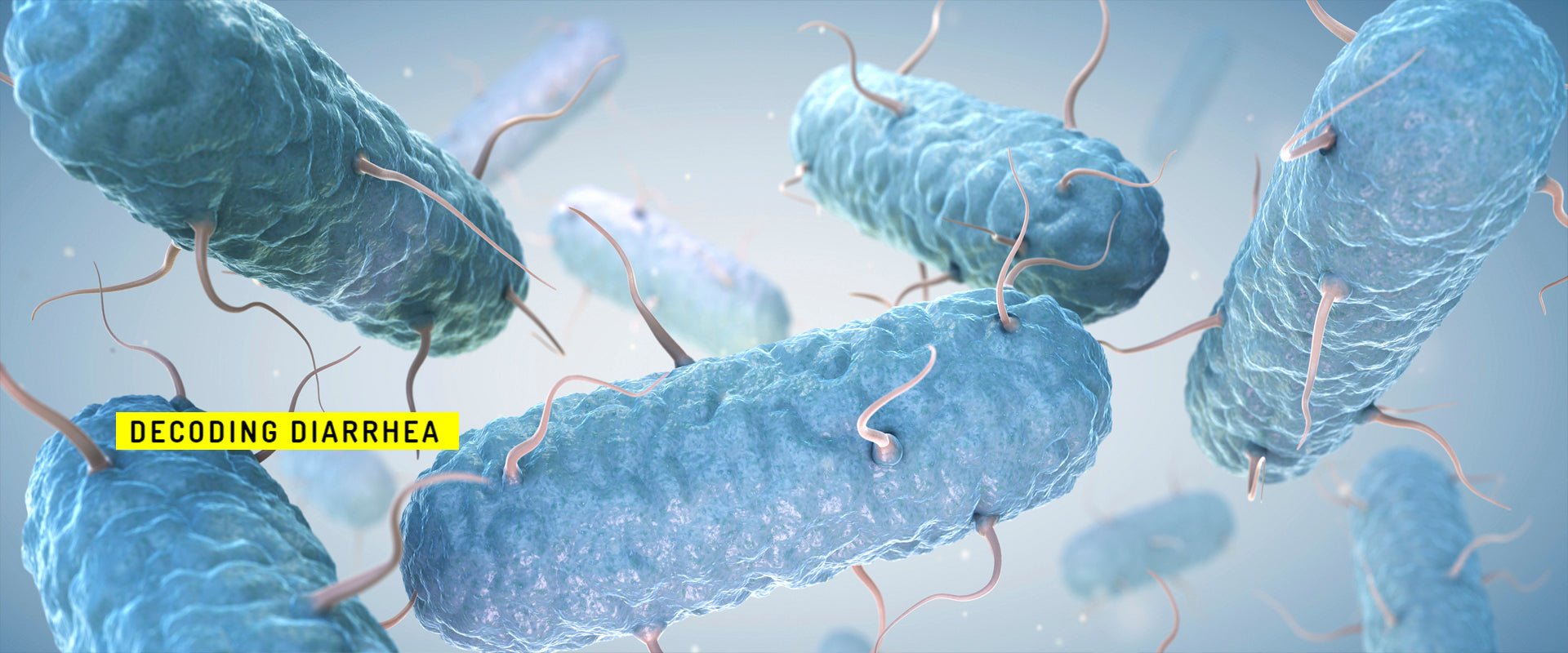Calf scours causes more financial losses to producers than any other health problem in their herds. Calf scours is not a single disease; it is a clinical sign associated with several diseases characterized by diarrhea. Infectious agents cause the primary damage to the intestine, but death from scours usually results from dehydration, acidosis, and loss of electrolytes. The identification of infectious agents which cause scours is essential for implementing effective preventive measures. Excellent dairy calf managers can spot diseases early and treat these calves so they have the best chances of recovering quickly. While we can identify specific agents of disease that cause scours, it is important to remember that the control of the disease often requires a system-wide approach of prevention rather than individual treatment to solve the problem. The difference between health and disease is very often just a slight tip of a delicate balance that weighs calf and environmental factors with the bacterial, viral or parasitic agents to which the calf will be exposed.

E. coli

Calves are affected within the first 3 days of life. Enterotoxigenic E. coli (ETEC) is the most common cause of newborn calf diarrhea.

Majority of E. coli (K 99) strains that are able to cause diarrhea, first colonize the calf’s gut.

Dehydration is usually severe and may cause death before diarrhea develops.

The course of the disease is rapid – from weakness, diarrhea, dehydration to death can be less than 24 hours.

Antibiotics rarely affect the outcome of this disease; fluid support is critical to survival.
Salmonella

Infections usually occur in 5 to 14 day old calves, can also affect calves up to 12 weeks of age.

Infection is by the fecal-oral route. Affected animals often have a fever, strain to defecate and lack a good appetite.

Salmonella can cross the intestinal tract and enter the blood stream, causing septicemia; these calves usually die within one or two days.

Blood and casts of intestines may be seen in the feces. The diarrhea may be bloody, watery, mucusy, foul smelling and may contain shreds of gut lining.

Salmonella produces a potent toxin or an endotoxin (poison) within its own cells. Treatment should be designed to combat endotoxic shock.

This organism may be found in unpasteurized waste milk. This bacteria can also cause pneumonia.

Salmonella Heidelberg has recently emerged as a highly potent calf-killer, causing death losses in 25 to 60% of affected calves in as little as 4 to 8 hours. S. Heidelberg is resistant to many antibiotics.


Coronavirus

Coronavirus and its usual companion, rotavirus, occur in calves from about 5 to 30 days of age. Most outbreaks seem to occur when calves are near a week of age.

Coronavirus is the one that causes bloody scours, and also may cause respiratory symptoms.

Intestinal lining damage is more severe with Coronavirus than Rotavirus; because of this, other pathogens can collaborate to produce a severe diarrhea episode.

Coronavirus damages the cells in the intestinal crypts and slows down the healing process in the intestinal lining. The result is widespread destruction of the lining of the small intestine.

The lack of small intestine nutrient absorption causes nutritional deficiencies for the calf and interferes with the rest of the digestive tract’s ability to absorb water.

Damage caused by either corona or rotavirus is often compounded by bacterial infections and the risk for fatal diarrhea is increased when mixed infections occur(25% losses have been reported) .

The morbidity (number of sick calves) ranges from 1-2% up to 20-30%. Mortality rates are quite variable. Many calves will recover if treated early.
Rotavirus

Diarrhea usually develops between 3 and 7 days of age.

There may be a drooling of saliva and profuse watery diarrhea. The feces will vary in color from yellow to green.

Rotavirus infects cells essential to the absorption of nutrients in the small intestine. The lack of small intestine nutrient absorption causes nutritional deficiencies for the calf, and interferes with the rest of the digestive tract’s ability to absorb water.

Not all calves with rotavirus have diarrhea.

Calves lose their appetite and the death rate may be high. Death losses are consistently associated with pronounced dehydration.

The infection may be short lived but the intestinal lining has to recover from damage.


Cryptosporidium Parvum

Calves usually are infected shortly after birth and develop diarrhea about 5 to 7 days of age.

Cryptosporidium is a protozoan parasite much smaller than coccidia. The organisms survive well in the environment .

Crypto implants itself in the wall of the intestine and causes severe inflammatory damage to the lining of the intestine.

This damage results in diarrhea. Crypto infections are incredibly painful for the calf.

As a rule, cryptosporidium is detected in combination with coronavirus, rotavirus, and/or E. coli.

Calves that do not have good colostral immunity or that are stressed by cold or inadequate nutrition are particularly susceptible. Colostral immunity is not completely protective.

This is one of the very bad bugs you can bring home from the sale yard.
Clostridium Perfringens

Clostridium perfringens infections are commonly known as enterotoxemia. Enterotoxemia is fatal and caused by toxins released by various types of C. perfringens.

There are several types of C. perfringens A, B, C, D and/or E. Type C can be a cause of diarrhea.

Bloody diarrhea may or may not occur.

The disease has a sudden onset. Affected calves become listless, display uneasiness, strain or kick at their abdomen. Some calves develop colic, become depressed, and may bloat.

Colic or nervous system signs may be seen before death. In many cases, calves may die without any signs being observed.

Post mortem examination has characteristic hemorrhage in the intestines and may look purple.

The hungry calf may over-consume milk, which establishes a media in the gut conducive to growth and production of toxins by Clostridial organisms.


Nutritional Scours

White scours caused by undigested milk passing through the intestinal tract. This type of scours usually presents little problem in treatment.

Incorrect timing - Feed calves on a regular schedule. Feeding at inconsistent times causes calf stress and increases the chance of acidosis.

Incorrect temperature - Calves should be drinking body temperature milk. A cow’s body temperature is between 101F/38C and 102.5F/39C.

Incorrect mixing - Make sure to accurately measure water and measure replacer powder by weight, then mix thoroughly. Milk replacer that is too concentrated can cause water from the calf’s body to move into the intestine, resulting in osmotic diarrhea.
Coccidiosis

Coccidiosis is seldom a problem in young calves. Infection by the coccidia parasite can occur from 1-2 weeks to several months of age.

The parasite has a 3-week incubation period from the time of infection to the shedding infectious parasites into the environment.

Most outbreaks were associated with stress, poor sanitation, over-crowding, or sudden changes in feed. It is spread through the fecal-oral route and is easily diagnosed by a fecal exam.

Some affected calves may exhibit signs of brain damage but tarry or bloody scours are commonly observed.

Most of these infections (95%) are subclinical, but other stressors on the animal, and/or an overwhelming dose of coccidia will cause visible symptoms.

Coccidiosis occurs more frequently in warm, moist climates.

Affected calves can have a rough coat, pot belly, poor body condition, and permanently stunted growth.

If one animal in a group of young calves is scouring because of coccidia, it is best to treat the whole group.

Once an animal has been diagnosed with coccidia, consider the premises contaminated for good. Scouring animals should be drenched, or treated through their water supply.





